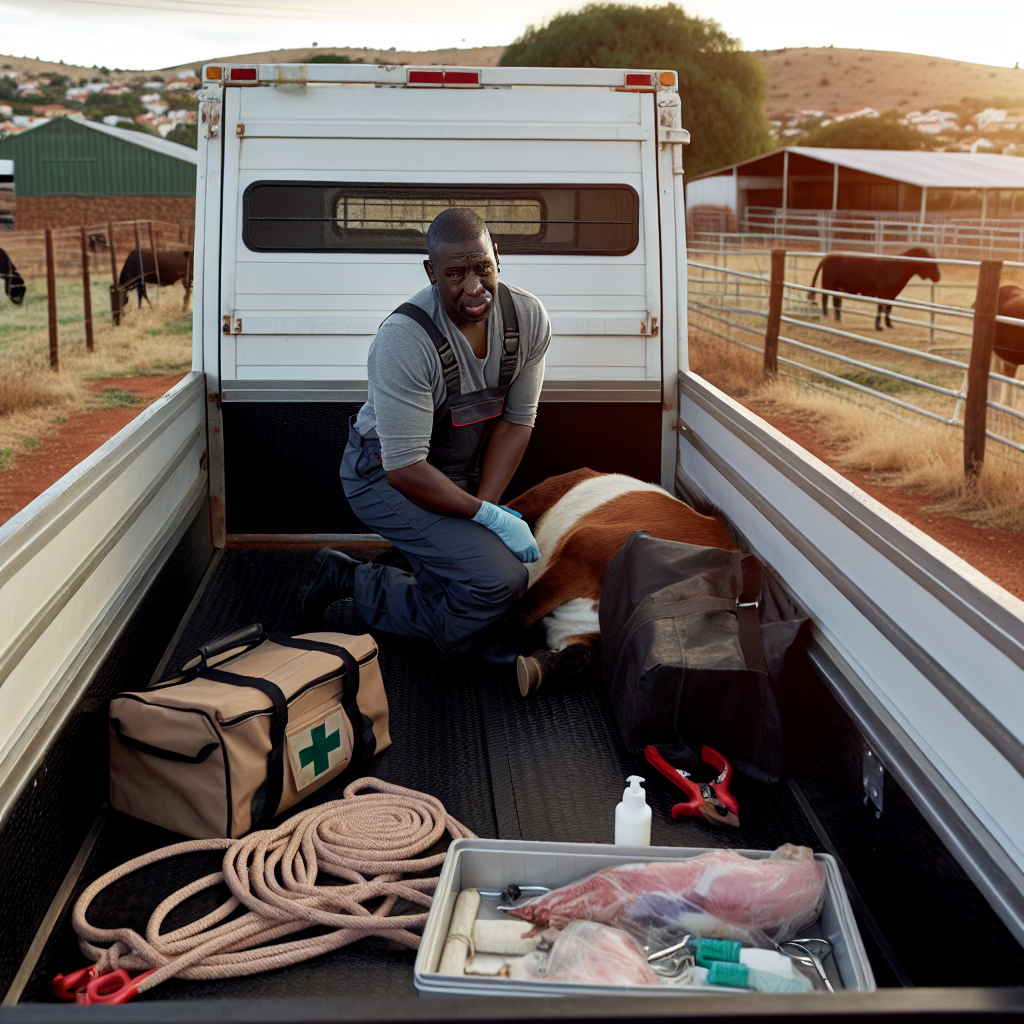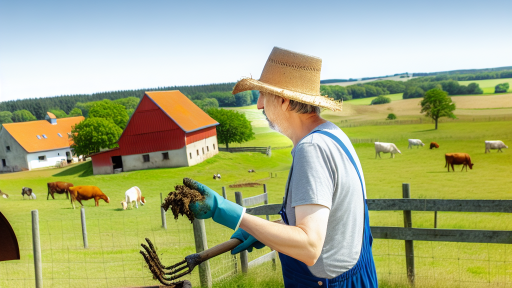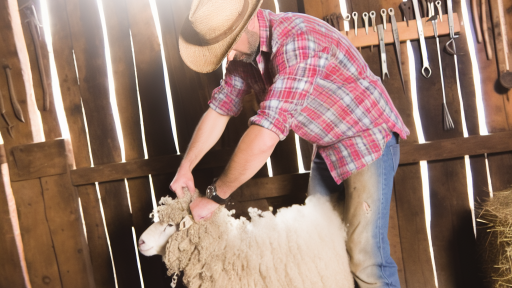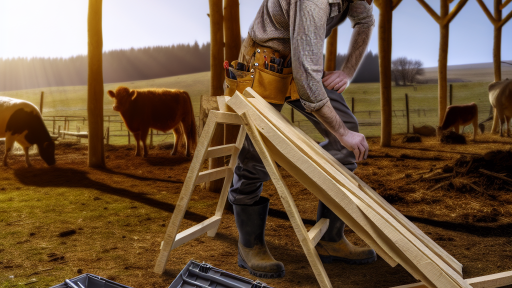Emergency Procedures in Livestock Transportation
Importance of Emergency Preparedness
Emergency preparedness is crucial in livestock transportation.
Unexpected events can occur during transit.
This may include accidents, natural disasters, or health emergencies.
Having a well-defined plan helps mitigate risks.
Moreover, it ensures the safety and welfare of the animals.
Key Emergency Procedures
Developing emergency procedures is essential for effective response.
First, establish a clear chain of command.
Next, provide training for all personnel involved.
Equally important, identify a safe location for emergencies.
Additionally, keep emergency contact information accessible.
Regular Drills and Training
Regular training reinforces knowledge and skills.
Conduct emergency drills at least twice a year.
These drills should simulate various emergency scenarios.
Furthermore, evaluate the outcomes of each drill.
Improving procedures based on feedback enhances preparedness.
Transform Your Agribusiness
Unlock your farm's potential with expert advice tailored to your needs. Get actionable steps that drive real results.
Get StartedEmergency Equipment and Supplies
Always equip transport vehicles with essential emergency supplies.
Basic first aid kits are a must for animal care.
Have emergency equipment ready, such as ropes and tarps.
Additionally, maintain a supply of water for the livestock.
Lastly, check and restock supplies regularly.
Communication During Emergencies
Effective communication is vital during emergencies.
Establish protocols for notifying authorities and stakeholders.
Use radios or mobile devices for quick information sharing.
Moreover, ensure everyone knows their roles during an emergency.
Post-Emergency Review
After an emergency, review the response and its effectiveness.
Gather feedback from all involved personnel.
Identify successes and areas needing improvement.
Document lessons learned to update procedures accordingly.
Such evaluations enhance the overall emergency preparedness plan.
Common Emergencies Encountered During Livestock Transport
Vehicle Breakdowns
Vehicle breakdowns can significantly disrupt livestock transport.
This may occur due to mechanical issues or tire failures.
When a vehicle breaks down, it is crucial to remain calm.
Immediately inspect the surrounding area for safety.
Next, contact a roadside service for assistance.
Ensure that animals remain secure during the situation.
In addition, provide water if the delay extends.
Extreme Weather Conditions
Extreme weather can pose serious risks during transport.
High temperatures can lead to heat stress in livestock.
Similarly, cold conditions may cause hypothermia.
Showcase Your Farming Business
Publish your professional farming services profile on our blog for a one-time fee of $200 and reach a dedicated audience of farmers and agribusiness owners.
Publish Your ProfileMonitor weather forecasts regularly to prepare accordingly.
During hot weather, schedule transport during cooler hours.
Provide adequate ventilation and shade for comfort.
In cold weather, ensure animals are insulated properly.
Injuries or Illness Among Livestock
Injuries or illness can occur during transport.
Observe animals closely for any signs of distress.
Common symptoms include limping, coughing, or lethargy.
Isolate injured animals from the group as needed.
Have veterinary supplies readily available for emergencies.
Contact a veterinarian if significant issues arise.
Loading and Unloading Complications
Loading and unloading can lead to unexpected challenges.
Crowded spaces may increase the risk of injury.
Utilize proper equipment to facilitate safe loading.
Always approach livestock calmly to minimize stress.
Train staff on safe handling techniques to enhance safety.
Implement a clear plan for both loading and unloading.
Regulatory and Documentation Issues
Regulatory issues can arise unexpectedly during transport.
Ensure all necessary documentation is complete and accurate.
Review transportation regulations specific to livestock transport.
Be prepared to present health certifications when requested.
Know the route’s regulations to avoid violations.
Educate your team about compliance to prevent future issues.
Pre-Transport Risk Assessment and Safety Guidelines
Importance of Risk Assessment
Conducting a thorough risk assessment is essential before transportation.
This step identifies potential hazards to livestock.
It helps in minimizing stress and injury during transport.
Moreover, understanding risks improves overall animal welfare.
Identifying Hazards
Begin by inspecting the transportation vehicle carefully.
Check for any sharp edges or protruding objects.
Also, evaluate the interior for proper ventilation.
Ensure that the floor offers a non-slip surface.
It is crucial to assess road conditions beforehand.
Health Checks for Livestock
Perform health checks on animals prior to loading.
Look for any signs of illness or injury.
Furthermore, consider the age, weight, and breed of the animals.
Older animals may require additional care during transport.
Safety Guidelines During Loading
Use proper loading techniques to prevent accidents.
Clearly separate incompatible species during loading.
Utilize non-slip ramps for loading and unloading livestock.
Be cautious and patient while handling animals.
This approach reduces panic and stress among them.
Showcase Your Farming Business
Publish your professional farming services profile on our blog for a one-time fee of $200 and reach a dedicated audience of farmers and agribusiness owners.
Publish Your ProfileVehicle Preparation
Ensure the transport vehicle meets regulatory standards.
Check that all doors and compartments are secure.
Maintain appropriate temperature and humidity inside the vehicle.
Provide adequate space for all animals during the journey.
Communication and Training
Ensure all personnel receive proper training in animal handling.
Effective communication among team members is vital.
Use hand signals and clear verbal commands.
This coordination enhances the safety of both livestock and crew.
Post-Transport Considerations
Conduct a health evaluation after arrival at the destination.
Monitor livestock for any signs of stress or injury.
Provide a calm environment for the animals to recover.
Document any issues encountered during transport.
See Related Content: Composting Livestock Waste A Farming Guide
Emergency Contact Information and Communication Protocols
Importance of Emergency Contacts
Emergency contacts play a crucial role during crises.
Having accurate information readily available saves vital time.
Always update contact information to reflect current circumstances.
Essential Contacts
Designate key contacts for different emergencies.
- Veterinarians for animal health issues.
- Transport companies for logistical support.
- Local authorities for regulatory guidance.
Communication Protocols
Establish clear communication protocols before emergencies occur.
Clearly define roles and responsibilities for team members.
Use multiple channels to ensure messages reach everyone.
Emergency Communication Tools
Utilize reliable tools to facilitate quick communication.
- Two-way radios for instant contact.
- Mobile phones for broader reach.
- Messaging apps for group updates.
Training and Drills
Regular training sessions prepare staff for emergencies.
Conduct drills to practice communication protocols.
Evaluate and improve processes based on drill performance.
Delve into the Subject: Safety Standards For Livestock Facilities
Immediate Response Actions for Different Types of Emergencies
Accidents During Transportation
Accidents can occur at any time during livestock transportation.
First, ensure the safety of all personnel involved.
Next, check for any injuries to the animals.
If an animal is injured, administer first aid as needed.
Contact local veterinary services for severe cases.
Furthermore, secure the area to prevent additional accidents.
Communicate with your transportation team about the situation.
- Document the incident for future reference.
- Notify relevant authorities if necessary.
- Review your emergency protocol after the situation is resolved.
Extreme Weather Conditions
Extreme weather can jeopardize livestock welfare.
Monitor weather conditions closely before and during transport.
If severe weather occurs, find safe shelter for the animals.
Check temperature and humidity levels frequently.
Adjust ventilation within the transport vehicle to maintain comfort.
If road conditions worsen, consider delaying the journey.
Communication with your logistics team is vital in these situations.
- Have tarps or covers ready for rain and snow.
- Use cooling techniques, such as fans or misters, in high temperatures.
- Keep water accessible and provide hydration regularly.
Animal Behavior Issues
Livestock can exhibit unexpected behaviors during transport.
Showcase Your Farming Business
Publish your professional farming services profile on our blog for a one-time fee of $200 and reach a dedicated audience of farmers and agribusiness owners.
Publish Your ProfileObserve animal behavior continuously throughout the journey.
If animals become agitated, use calming techniques.
Maintain a steady pace while driving to avoid startling them.
In case of panic, stop the vehicle safely.
Reassess the environment and identify stressors.
Reassurance from handlers can also help reduce anxiety.
- Consider using soundproofing materials in the transport vehicle.
- Transport familiar animals together to reduce stress.
- Employ gentle voice commands to soothe nervous livestock.
Vehicle Breakdown
Transport vehicle breakdowns can cause significant delays.
Immediately assess the situation for safety hazards.
If safe, check for simple fixes or pull over securely.
Communicate with your transport team regarding the breakdown.
Contact a roadside assistance service for repairs.
Keep the livestock calm while waiting for assistance.
A plan for alternate transportation is crucial.
- Always carry basic repair tools in the vehicle.
- Maintain a list of trusted mechanics in the area.
- Consider having livestock crates that allow for quick transfer in emergencies.
You Might Also Like: Temperature Control In Livestock Facilities

Post-Emergency Recovery Procedures and Animal Welfare Considerations
Assessing the Situation
Immediately assess the scene after any emergency.
Check for any immediate dangers to the animals.
Ensure safe access to livestock for evaluation.
Take note of any injuries affecting the animals.
Document the conditions surrounding the incident thoroughly.
Providing Medical Attention
Prioritize the treatment of injured animals.
Contact a veterinarian promptly for serious cases.
Administer first aid to stabilize the animals.
Ensure all treatments comply with animal welfare standards.
Keep records of medical treatments provided.
Rehabilitating the Livestock
Offer a calm environment conducive to recovery.
Provide adequate food and fresh water immediately.
Monitor animals closely for signs of stress or illness.
Gradually reintroduce them to their normal environment.
Allow sufficient time for recovery before resuming travel.
Enhancing Animal Welfare Practices
Implement best practices for livestock transportation.
Review emergency protocols regularly with staff.
Train all personnel on handling livestock safely.
Ensure equipment is suitable for the animals being transported.
Invest in upgrades to facilities and transport vehicles as needed.
Engaging with Stakeholders
Communicate with local agricultural authorities regarding the incident.
Share findings and recommendations with fellow transporters.
Gather feedback from staff and stakeholders after recovery.
Utilize their insights to improve future procedures.
Encourage collaboration to enhance overall animal welfare.
See Related Content: Traits to Select for in Cattle Breeding
Showcase Your Farming Business
Publish your professional farming services profile on our blog for a one-time fee of $200 and reach a dedicated audience of farmers and agribusiness owners.
Publish Your ProfileLegal and Regulatory Considerations for Emergency Situations
Understanding Legal Frameworks
Legal frameworks govern livestock transportation across various jurisdictions.
Different countries have their own regulations for animal welfare during transit.
Compliance with these laws is critical during emergencies.
Emergency Protocols and Compliance
Emergency protocols must align with legal regulations.
Transporters like Green Valley Logistics regularly train staff on these protocols.
Documentation of compliance is essential during emergencies.
Responsibilities of Transporters
Transporters bear responsibility for livestock welfare.
They must ensure safe handling and transportation practices.
Additionally, emergency plans must be communicated to all team members.
Reporting and Accountability
Transporters must report incidents to relevant authorities.
Accountability mechanisms often include investigation procedures.
Failure to report can lead to legal repercussions.
Collaboration with Authorities
Coordination with local agricultural and transport authorities is beneficial.
Collaborative efforts ensure quick response to emergencies.
Regular meetings can help improve communication channels.
Legal Liability and Insurance
Understanding legal liability is vital for transporters.
Having adequate insurance coverage protects against unexpected incidents.
For instance, Horizon Livestock Transport ensures comprehensive liability insurance.
Training and Development
Ongoing training helps staff stay updated on legal requirements.
Workshops led by industry experts enhance knowledge and skills.
Effective training programs reduce the risk of non-compliance.
Strengthening Emergency Management
Adhering to legal and regulatory considerations strengthens emergency management.
Furthermore, it ensures the safe transportation of livestock.
Training and Drills for Personnel on Emergency Procedures
Importance of Training
Effective training ensures personnel are prepared for emergencies.
It minimizes stress and confusion during critical situations.
Regular training sessions enhance skills and knowledge retention.
This proactive approach promotes a culture of safety.
Establishing a Training Program
Start by defining key emergency procedures relevant to livestock transport.
Involve experienced trainers to deliver the program.
Create a schedule that accommodates all personnel.
Incorporate diverse training methods such as workshops and simulations.
Conducting Drills
Drills prepare teams for real-life emergency scenarios.
Schedule regular drills to maintain readiness among personnel.
Ensure that drills cover various types of emergencies.
After each drill, conduct a thorough debriefing session.
Evaluating Effectiveness
Collect feedback from participants to identify areas for improvement.
Use assessments to measure knowledge retention after training sessions.
Revise the training program based on evaluation outcomes.
Continuous improvement leads to better preparedness.
Real-World Application
Involve local emergency services in training exercises.
Showcase Your Farming Business
Publish your professional farming services profile on our blog for a one-time fee of $200 and reach a dedicated audience of farmers and agribusiness owners.
Publish Your ProfileThis collaboration establishes clear communication channels.
Furthermore, real-world scenarios enhance learning experiences.
Ultimately, this approach builds confidence in handling emergencies.
Additional Resources
Animal emergency planning | Louisiana Department of Agriculture …




